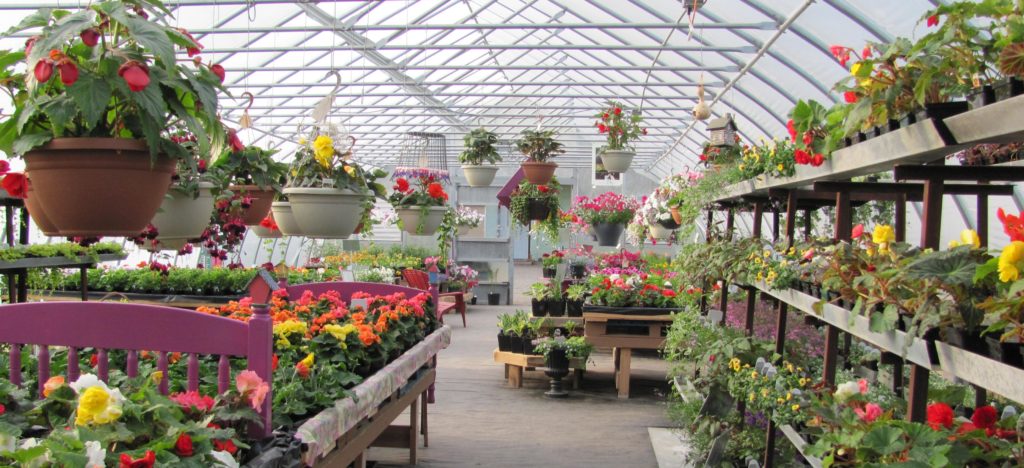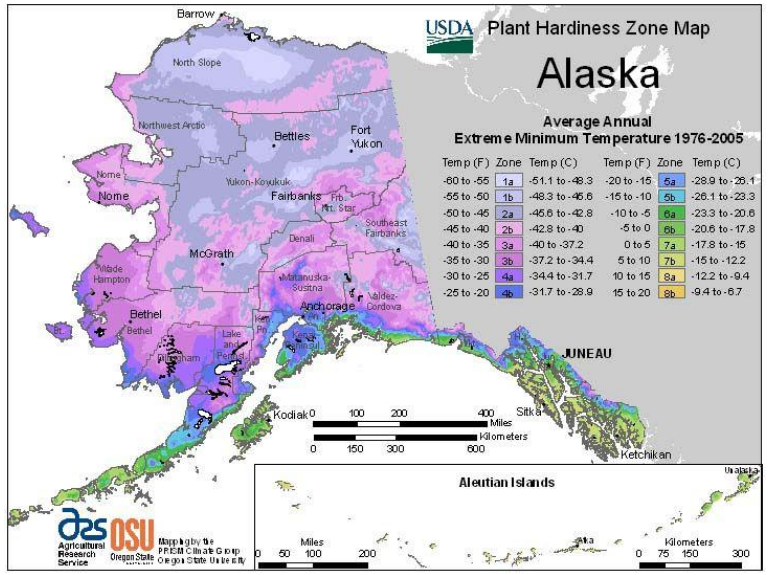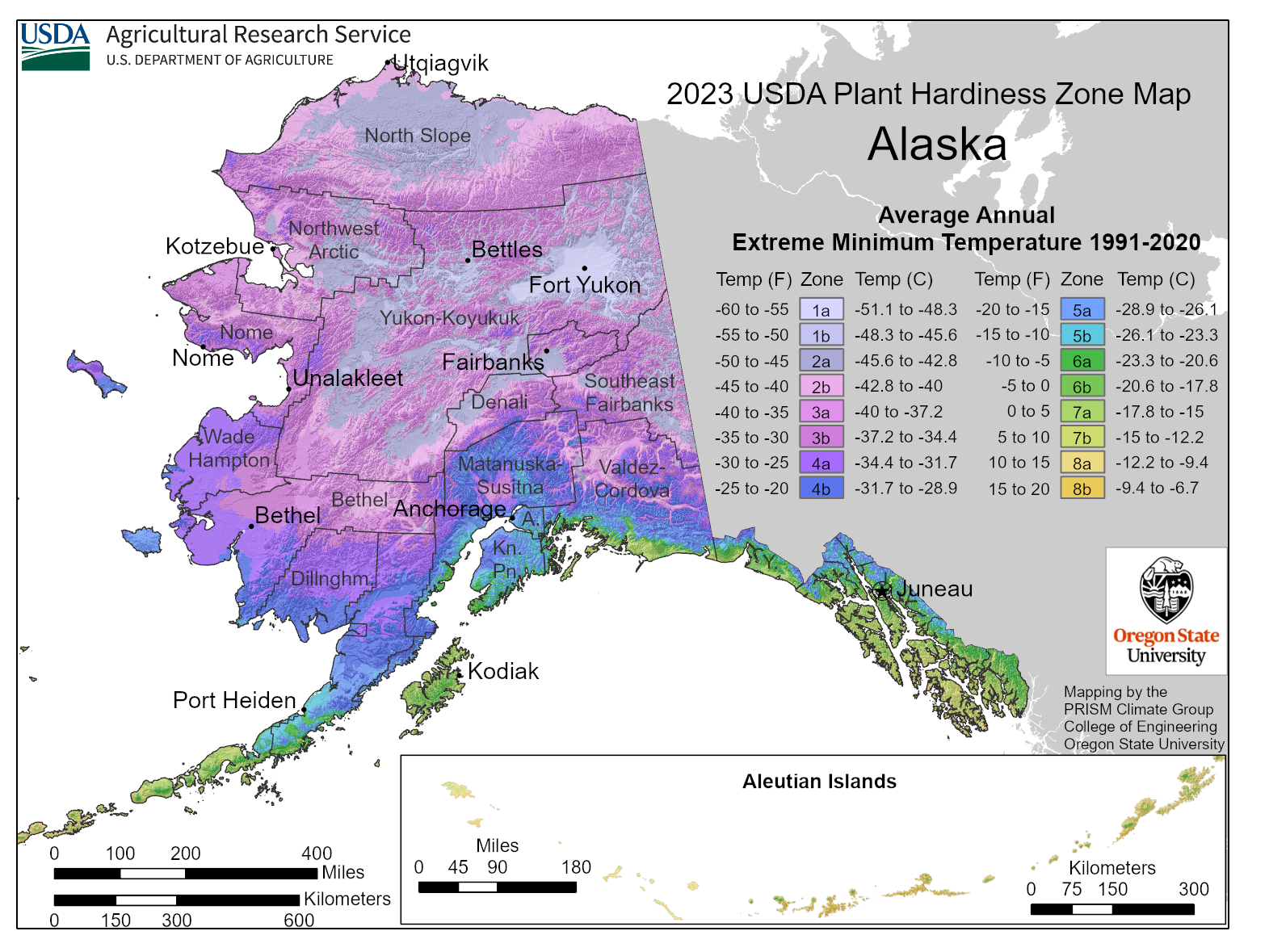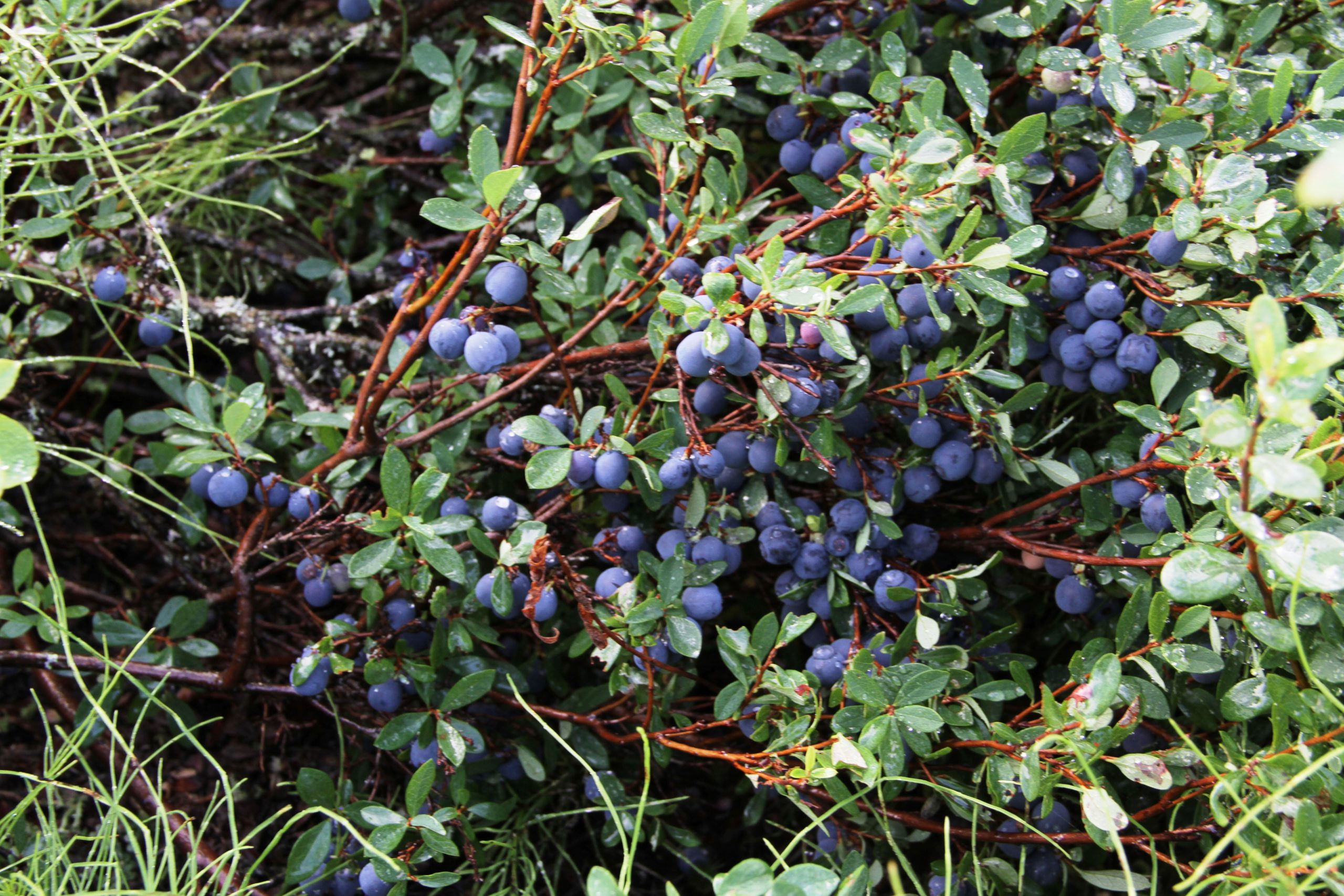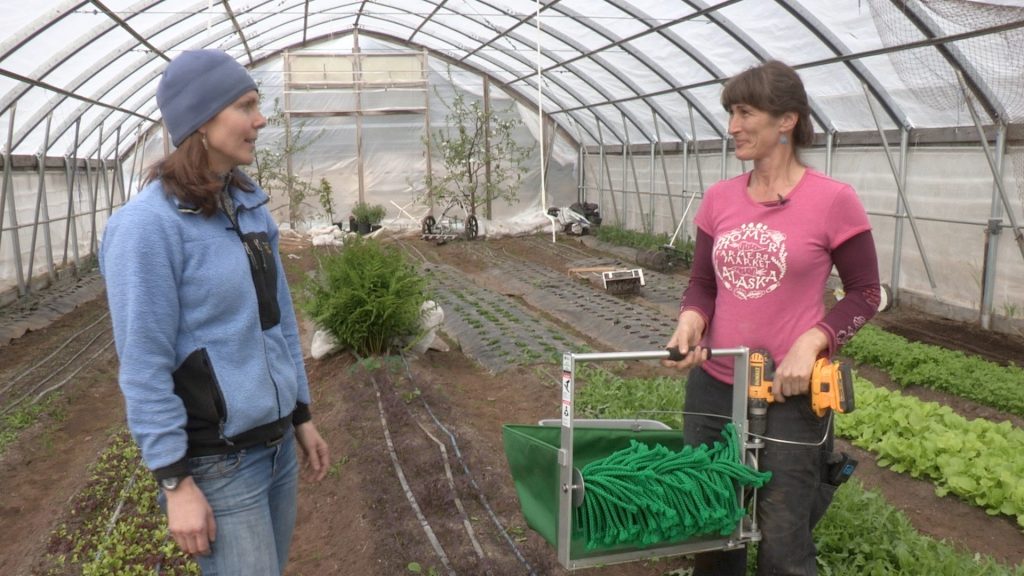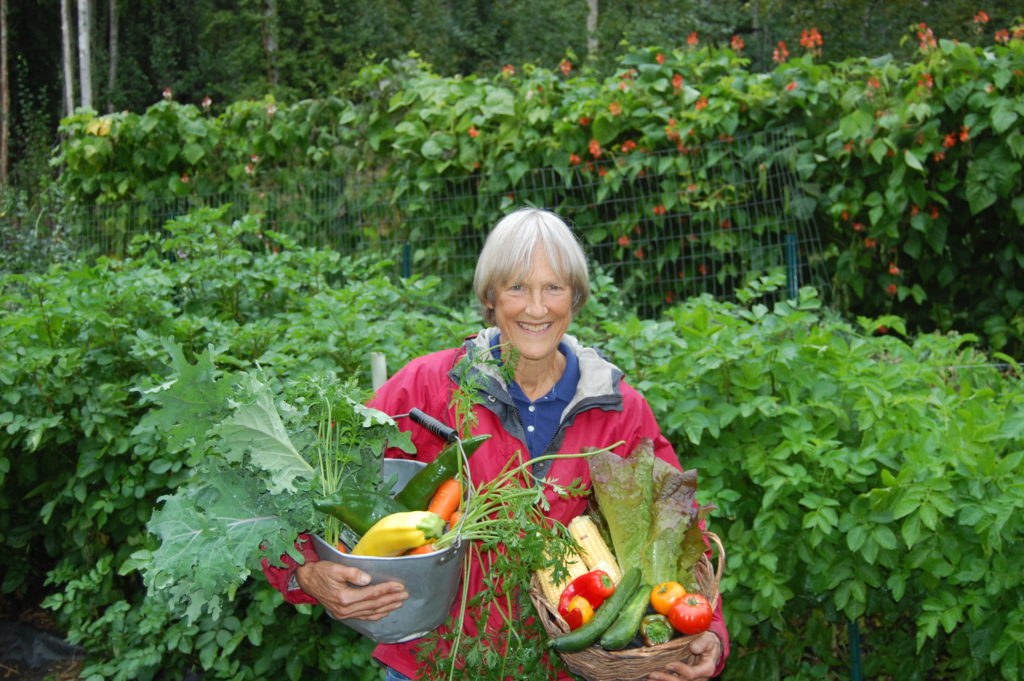In Interior Alaska, tulips and daffodils are uncommon. You might find them cozied up to a building, downtown in yards with slightly warmer soil due to the steam heat or in the hills.
For those of us who have lived farther south—even farther south in Alaska—we know that there’s a lot we’re missing in terms of spring color. Many spring-blooming bulbs, including tulips, are only hardy to Zone 3 or 4 on the USDA’s Plant Hardiness Zone Map. Some areas of Fairbanks are Zone 1 on paper. But recent, mild winters and a protected garden bed next to my house have inspired me to try my luck with tulips.
One year, I planted whatever type of bulb looked pretty at the grocery store—I think it was Pinochio, a Greigii tulip. Those came up the first spring after a mild winter.

Later, I did a little more research into hardier bulbs and ones that would multiply, and I planned ahead and ordered them. They included Plaisir, Purple Lord, Alibi and Violacea tulips. Most of these tulips (maybe all) bloomed nicely. In springs three and four, they continued to multiply and survive.
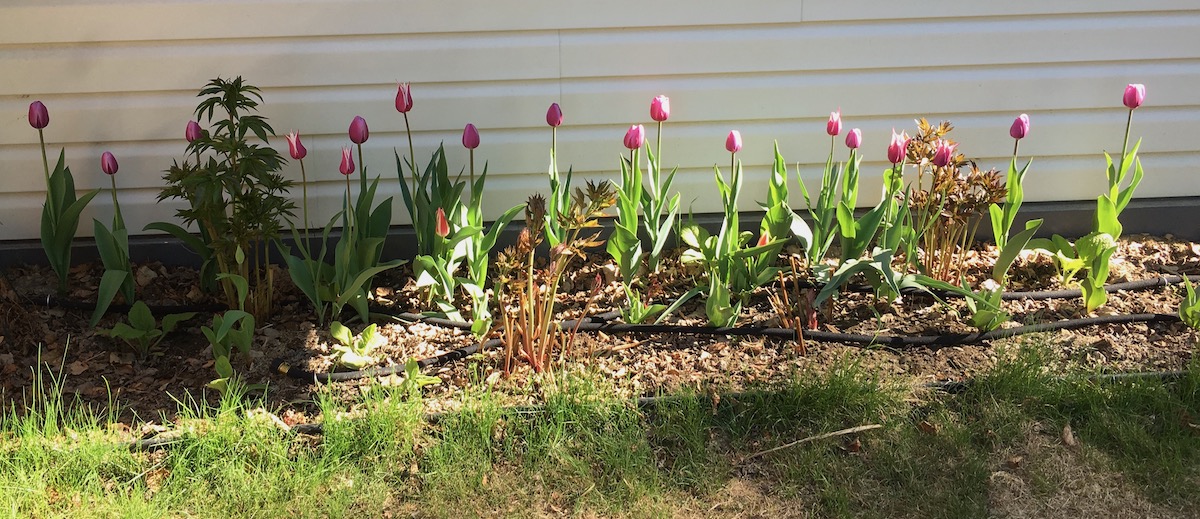
The first year the tulips are most likely to bloom, if you purchased nice, healthy bulbs. I planted Violate tulips in a bed that was not next to the house and exactly zero emerged, let alone bloomed. Because this garden bed doubled as our snow dump likely played a role in this.
The Georgeson Botanical Garden trialed a smattering of flowering bulbs in the 1990s. Of the tulips, Tarda tulip emerged from the winter with the least amount of injury and survived more years than other tulips at the garden. Bright Gem, United States, and Persian Pearl survived, but not unscathed, from the winter.
In general, Scilla tends to winter over well in Fairbanks and sometimes grape hyacinth does as well. Snowdrops are also hardy. But Scilla, grape hyacinths and snowdrops are too diminutive to satisfy my need for color after a long, white winter. And if the winter is particularly brutal with minimal snow cover, then only the hardiest will survive. In Northern Garden Symphony: Combining Hardy Perennials for Blooms All Season, Cyndie Warbelow recommends a showy allium called ‘Purple Sensation’ as another bulb to consider planting in the fall.
For bulbs, planning is key, especially for the first year. You’ll need to plant the bulbs two or three weeks before the ground is frozen. This will give them time to establish roots, without the shoots emerging. Warbelow recommends planting bulbs in late August to early September or when the soil temperatures are in the mid to low 50s (Fahrenheit).
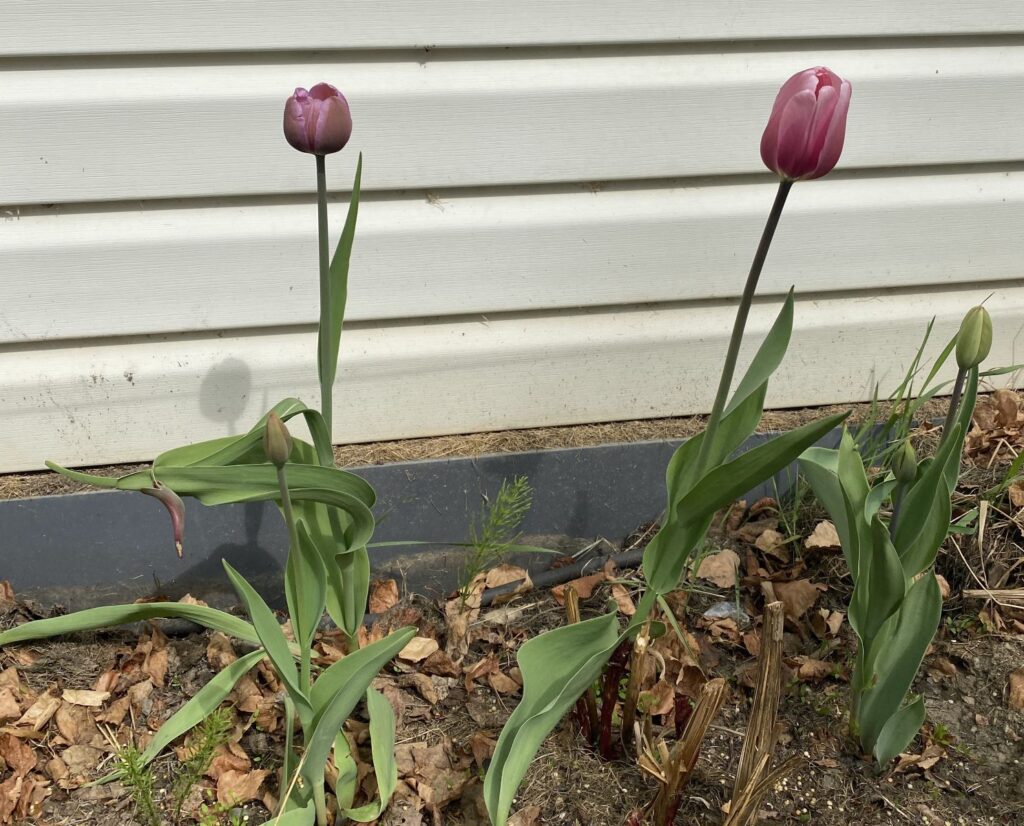
Warbelow also recommends planting bulbs just 1-3 inches deep so that they are in the layer of soil that thaws first in the spring. The standard recommendation is to plant tulips and daffodils 5-6 inches deep and smaller bulbs like Scillas and grape hyacinths, 2-3 inches deep. If the ground is wet when you plant the bulbs, there is no need to water, but if it’s dry you should water them a bit. Well-drained soil is ideal, especially if it is a very wet fall because the bulbs could rot. Incorporate a little fertilizer before planting—organic or slow-release works best since the bulbs will use it in the spring. Adequate snow cover or mulch is a must for Fairbanks. These types of bulbs require a jolt of cold—but they don’t need 40 below cold, which, if not mulched properly, could likely kill the bulbs. What Fairbanks does have going for it is generally dry conditions and sometimes hot summers.
It can be tricky to find bulbs when you need them. You might spot them at grocery stores and local greenhouses, but they may not be the variety you want or the hardiest varieties. It’s easy to find myriad varieties online, but many companies don’t ship to Alaska. If they do ship to Alaska, they may very well ship them too late—when the ground is frozen or nearly frozen and covered with snow. So double-check that the company will ship bulbs to you earlier than to other customers.
In the spring, peel back the mulch, water, and fertilizer with a slow-release or organic fertilizer. To encourage the bulbs to naturalize and multiply, cut the flower stems after they’re past their prime. Cut the leaves back only after they’ve withered so the bulbs can store nutrients for next year. If they survive the first year and begin to multiply, then you can treat them much like you would treat your other perennials. Some bulbs tend to multiply better than others. If they do multiply, in the fall you can divide the bulbs and plant either right away, giving them more space than if you had not divided them, or store cool and dry to be planted later, but no later than a year.
I have my bulbs planted in a bed with peonies and also usually interplant some showy annuals. This provides nice, successive color. I’m already looking forward to their bright show!
Previously published in the Fairbanks Daily Newsminer Septemper 9, 2017. Updated February 10, 2022.
